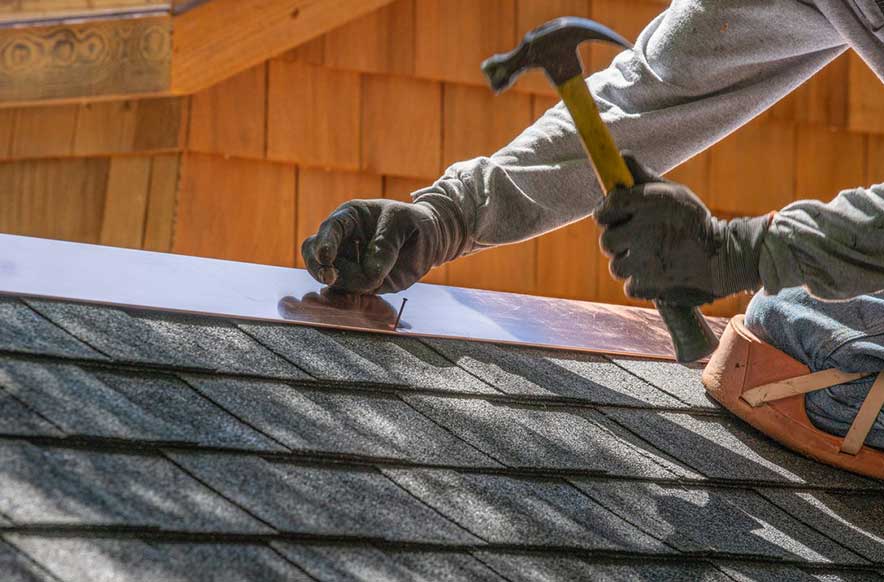A commercial roof shields stock, equipment, and staff from every blast of wind or drop of rain. Yet many owners pick a material only after leaks begin. Taking a step back to weigh roof options before trouble strikes saves money and worry. The best choice depends on local weather, foot traffic, and energy targets. Some systems last three decades with little care, while others are built for quick fixes and tight budgets. In this blog, you’ll see how average cost, weight, and upkeep compare. Each section runs through real-world numbers and clear pros and cons, so you can talk with a roofer and know exactly what to ask for.
Roof Duty Explained
A roof does more than keep water out. It must
handle gulf storms and daily heat swings,
bear the load of HVAC units and walkways,
satisfy fire codes and insurance rules.
Most commercial decks are steel or concrete, so weight ratings matter. For instance, heavy clay tiles tip the scale at about 900 lb per 100 sq ft, while single-ply sheets can be under 150 lb. Fastener choice is vital too. A loose screw on a standing-seam panel can let in wind at 80 mph. Owners should also think about reflectance. A white membrane can push rooftop surface temperature down by 50°F at noon, cutting summer energy bills by up to 15 percent. Life-cycle math shows that material, labor, and yearly care together paint the full cost picture.
Built-Up Roofing Basics
Built-up roofing (BUR) has served warehouses since the 1920s. It stacks layers of hot asphalt and reinforcing felt, then tops them with gravel. Key points:
Layers: Three to five plies give a finished thickness of ⅜–½ in.
Fire shield: Surfacing stone slows flame spread and guards against UV.
Service life: 20–30 years when drains stay clear.
BUR excels on decks that see constant foot traffic, because gravel protects the bitumen. The average installed price lands near $5–$7 per sq ft. Heat can soften asphalt, so summer crews must stage work early in the day. Core cuts during inspection reveal trapped moisture; if water reaches 30 percent saturation, spot repair may not hold, and a partial tear-off is wiser.
Modified Bitumen Sheets
Modified bitumen is BUR’s younger cousin, shipped in rolls. SBS (styrene-butadiene-styrene) and APP (atactic polypropylene) are added to asphalt to improve its flexibility and help prevent cracking over time. Typical roll facts:
Width/Length: 39 in × 33 ft (one square).
Application: Torch-down, cold-adhesive, or peel-and-stick.
Thickness: 140–180 mil.
Two-ply systems hit a sweet spot for strip malls that need quick weekend installs. SBS handles cold flex to – 25°F without splitting, useful in mountain towns. APP stands up well to 300°F rooftop temps, a win in desert sites. Expect $4–$6 per sq ft installed. Annual checks should look for blister pockets; cutting and patching faulty spots keeps the membrane tight for up to 25 years.
TPO Single-Ply Membranes
Thermoplastic polyolefin (TPO) is the fastest-growing choice for low-slope roofs. It arrives white, gray, or tan, with seams fused by hot air. Highlights include:
Reflective rating: Solar reflectance index (SRI) often 90+.
Seam strength: Up to four times stronger than taped EPDM joints.
Recyclable: Trim scraps can go back into new sheets.
A 60 mil TPO layer weighs roughly 0.3 lb per sq ft, easing load worries on light steel decks. A study by the Oak Ridge Lab showed a 30 percent drop in AC use on buildings that swapped black BUR for white TPO. Installed cost sits at $5–$8 per sq ft. Crews must keep weld tips clean; dirt can weaken a seam in seconds.
EPDM Rubber Roofs
Ethylene-propylene-diene monomer (EPDM) is the classic black rubber roof. Rolls run up to 50 ft wide, so many decks need only two seams. Key facts:
Thickness options: 45, 60, and 90 mil.
Fastening: Ballasted stone, full glue, or plates and screws.
Service span: 25–30 years when seams stay sealed.
Black EPDM absorbs heat, helpful for winter melt but harder on summer bills. White-coated sheets are an option, but they cost more. Fully adhered systems handle uplift well, surviving gusts over 120 mph in lab tests. Price: $4–$6 per sq ft installed. Owners should check for chalking after ten years; a simple acrylic topcoat will freshen reflectance and extend life.
Metal Panel Choices
Commercial metal roofing covers factories, offices, and even big-box stores. Common metals are galvanized steel, Galvalume®, and aluminum. Typical panel specs:
Gauge: 24 ga (steel) or 0.032 in (aluminum).
Finish: Polyester or Kynar 500® paint is good for a 20-year color hold.
Profile: Standing seam, R-panel, or corrugated.
A steel standing seam roof weighs about 1.25 lb per sq ft—light yet durable. Panels reflect heat and shed snow fast, easing deck stress. Retrofit systems can clamp over an old shingle roof, keeping debris out of landfills. Upfront cost ranges $7–$12 per sq ft, but a 40-year life evens the ledger. Fastener gaskets should be changed at mid-life to head off leaks.
Spray Foam Layers
Spray polyurethane foam (SPF) is applied as a liquid that expands 30-fold and hardens in minutes. After cure, it gets a UV-guard topcoat. Benefits include:
R-value: About R-6.5 per inch, twice that of fiberglass.
Seamless: No laps, so water has no straight path inside.
Weight: Only 0.05 lb per sq ft at one inch thick.
SPF is great for odd-shaped decks and those dotted with vents. It also boosts roof slope; technicians can create drainage channels during the spray. The system costs $6–$10 per sq ft. Annual recovers of the topcoat stop sun chalking. If hail dents the foam deeper than ¼ in, cutters can shave and patch only the hurt spots—saving both time and cash.
Cool And Green Roofs
Cool roofs use reflective coatings or white membranes to bounce sunlight. Green roofs layer soil and plants over a waterproof sheet. Why they matter:
Energy cut: Up to 30 percent less heat gain on peak days.
Stormwater hold: Green roofs can store 1 in of rain before runoff.
Noise control: Soil and foliage can damp rooftop HVAC sound by 5 dB.
A cool acrylic coat weighs almost nothing, so retrofits are easy. Green roofs need a structural check; saturated media can add 15–30 lb per sq ft. Both systems may qualify for local tax breaks. Maintenance is low for cool coats—just annual washes. Green roofs need seasonal weeding and irrigation lines, yet the boost in roof life can be 40 years or more because plants shield the membrane from the sun.
Cost Care Lifespan
Before signing any contract, line up three facts: first costs, yearly care, and tear-off waste. Quick guide:
BUR/Mod Bit: Low cost, mid-weight, steady upkeep.
TPO/PVC: Cool, light, weldable seams, watch for foot scuffs.
EPDM: Wide rolls, easy repair, darker heat gain.
Metal: 40-year durability, higher ticket, inspect fasteners.
SPF: Insulates well, recoat every decade.
Set a maintenance plan with the installer. Simple tasks—clearing drains, checking seals, logging pictures—extend service life by 25 percent on average. Budget one percent of roof value each year for care; the savings from avoided leaks and energy loss will outweigh the cost many times over.
Choose With Confidence
Choosing a commercial roof isn’t about trends—it’s about selecting materials that fit your building’s specific needs and long-term performance goals. Hot-mop BUR still shines on busy restaurant roofs, while white TPO wins on sun-beaten offices. Metal fits owners who plan to stay for decades, and spray foam seals quirky decks with ease. Look at load limits, weather records, energy goals, and access paths. Then weigh first price against thirty years of service. A clear plan, a skilled crew, and routine checkups will keep rain where it belongs—outside—and profits safe inside. With the facts in hand, you can choose, install, and rest easy under a roof that works as hard as your business.



